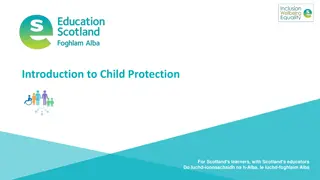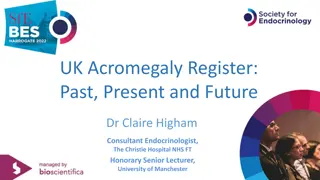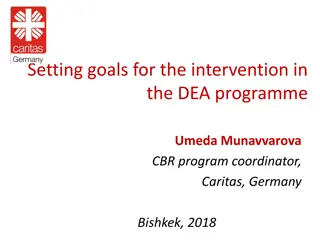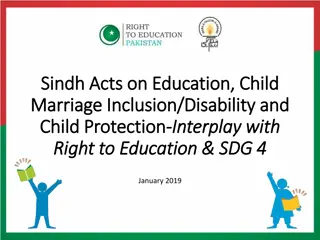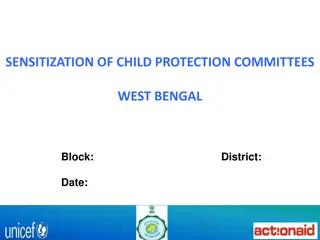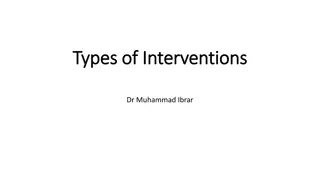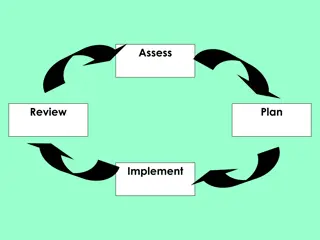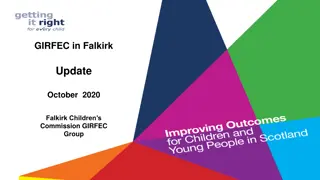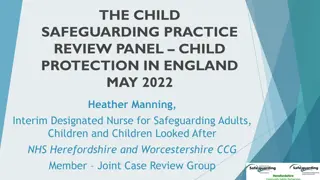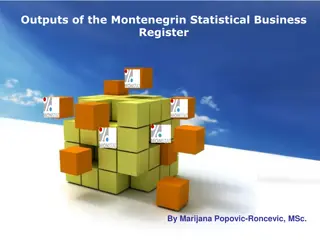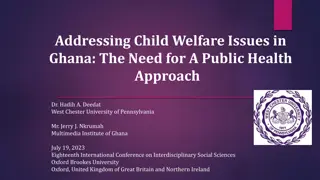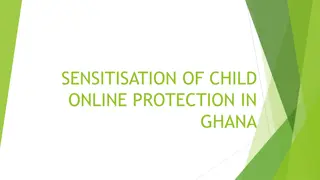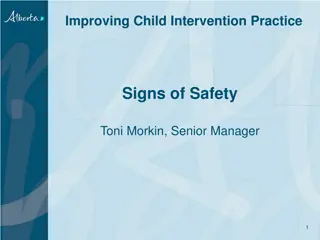Child Protection Register and Intervention Planning
Child protection register is a vital tool used by social services to identify at-risk children and provide necessary care and support. Children on the register receive a care and support protection plan to ensure their safety, well-being, and development. Child-centered planning is key, focusing on achievable outcomes and involving practitioners and family members in the process. The core group, a multi-agency task force, collaborates to implement these plans effectively.
Download Presentation

Please find below an Image/Link to download the presentation.
The content on the website is provided AS IS for your information and personal use only. It may not be sold, licensed, or shared on other websites without obtaining consent from the author. Download presentation by click this link. If you encounter any issues during the download, it is possible that the publisher has removed the file from their server.
E N D
Presentation Transcript
Child protection register Planning and intervention for children on the child protection register
The child protection register The child protection register: lists all the names of children in a local authority area who are suffering or likely to suffer significant harm and who are currently subject to a care and support protection plan provides a record of all children in the area who were the subject of a care and support protection plan but have been de-registered is administered by the social services covering the area where the child is currently living provides a central point of contact for practitioners to establish whether a child they are concerned about is the subject of a care and support protection plan
Care and support protection plan A child whose name is placed on the child protection register at an initial child protection conference should have a care and support protection plan The aims of the plan are to: ensure the child is safe and prevent further significant harm promote the child s well-being and development identify outcomes for the child to be safe in the future identify developmental needs and services required to meet them if it s in the best interests of the child, to support the family to safeguard and promote their well-being
Child-centred planning The only measurement of success is quality improvement to the daily lived experience of the child The plan should: describe the identified risk, the child s needs, and any required support/therapeutic services set out what work needs to be done, why, when and by whom include specific, achievable, child-focused outcomes include realistic strategies and specific actions to achieve the outcomes clearly identify roles and responsibilities of practitioners and family members agree contingency plans if access to the child/home is denied and/or the plan is not protecting the child from significant harm
The core group The core group is a multi-agency, task-focused group of practitioners with responsibility for working collaboratively to implement the care and support protection plan for the child whose name is on the register
Initial core group meeting The initial core group meeting should be held within 10 working days of the child protection conference at which the child was registered The aim of the initial core group meeting is to: understand everyone s contribution to the plan ensure the needs of each child are given due consideration child-centred outcome measures are used avoid professional short-hand and jargon ongoing consideration is given to parental motivation and ability to change ensure parents understand what is expected of them and the rationale due consideration is given to what the family want to see change ensure to play on strengths and celebrate success
Subsequent core group meetings Further core group meetings should take place at least once every six weeks, more frequently if required Members should make every effort to attend The purpose is to ensure the care and support protection plan is being delivered and is achieving the agreed child-focused outcomes
Subsequent core group meetings The following questions should be considered at each meeting: what has been achieved since the last meeting? how well are we working together: child, family and practitioners? what has the child and those in contact with them noticed about quality changes to their lived experience? is the child at continuing risk of significant harm? if the plan is not working, do we understand why not? if there are identified barriers to change, what are we doing to address them? what do we need to achieve before the next meeting?
Subsequent core group meetings All core group meetings must be recorded in writing and include: notes on the actions agreed and decisions taken evaluation of plan progress in terms of achieving child-focused outcomes any adjustments, revisions agreed with timescales plan of work to be completed and by whom before next meeting
Engaging the parents/carers A care and support protection plan is dependent on the family actively engaging with the core group and the implementation of the plan They need to demonstrate commitment to the plan and effort to change behaviours, while focusing on achieving child-centred outcomes Lack of engagement by the family with the plan Some may lack the ability and/or motivation to actively engage in the plan The core group should be specific about the behaviours that demonstrate a lack of engagement and assess what these behaviours are demonstrating
Engaging with the child It is essential that practitioners actively engage with every child to establish whether the plan is improving the quality of their lives and protecting them from harm The care and support protection plan co-ordinator is expected to see the child alone at least every 10 working days and at least one meeting every four weeks should be at the child s home Children and young people are entitled to an active offer of advocacy from a statutory Independent Professional Advocate (IPA). The offer of advocacy is not a one off event and should be revisited at each stage. The use of advocacy must be considered at all stages of the child protection process for the child
Seeing the child Seeing the child means engaging with the child, taking account of their age, development and individual needs The aim is to: understand what life is like for them (daily lived experience) ascertain their wishes and feelings enable children to communicate in a way that is comfortable for them observe their behaviour and interactions with family members understand their world by using various tools
Engaging with the child Effective engagement means: providing the child with information so they understand the practitioners concerns and why they are involved in their lives giving them opportunities to express their wishes, feelings and opinions as to the impact of the plan on their daily lives taking their opinions seriously and ensuring their opinions are considered by the core group and at review conferences it is important that each child in a family who is subject to a plan is provided with opportunities to meet with the care and support protection co-ordinator on their own. This ensures that their particular needs, views and opinions are considered without being influenced by others
The review conference The first child protection review conference should be held within three months of the initial conference Further review conferences should be held at regular intervals (at least every six months) The review conference is tasked with making the decision as to whether a child whose name is on the register continues to be at risk of significant harm
The review conference Practitioner members of the core group must produce individual agency reports and updated chronologies at least five working days before the review conference Combined these reports should provide a comprehensive overview of: the work undertaken by family members and practitioners, and its effectiveness in keeping the child safe from harm the impact on the child s well-being against the objectives and planned outcomes set out in the care and support protection plan
The review conference At the end of each review, a decision is made as to whether the child: is at continuing risk of significant harm and therefore their name should remain on the child protection register, and whether the category for registration remains the same is no longer at continuing risk of significant harm / requiring protection by a care and support protection plan and can be de-registered
De-registration A child s name can only be removed from the child protection register and identified as no longer requiring a care and support protection plan if a review conference decides that the child: is no longer at continuing risk of significant harm / requiring protection by a care and support protection plan the child and family have moved permanently to another local authority area the child has reached 18 years of age, has died or has permanently left the UK
De-registration De-registration should never lead to the automatic withdrawal of care and support Consideration should be given as to whether: services through a care and support plan will be required with parental/carer agreement support services will need to be provided, with parental/carer agreement, to help maintain the conditions that have led to de-registration



